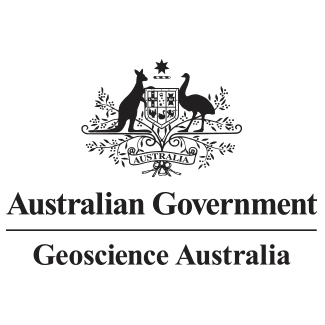Full description
Raster datasets of inferred magnesium number for the bulk lithospheric mantle across the Australian continent. The magnesium number is an elemental ratio, defined by Mg / (Mg + Fe), which correlates to the relative enrichment or depletion in incompatible elements. Oxide concentrations are inferred in from thermo-chemical inverse modelling of Rayleigh phase velocities, surface heat flow, geoid anomalies, and topography. The magnesium number rasters summarise the results of a Markov-chain Monte Carlo sampling of the posterior model space from an ensemble of plausible candidate models. Model release 'FR23' is developed using primary-mode Rayleigh phase velocity grids adapted from Fishwick & Rawlinson (2012; "3-D structure of the Australian lithosphere from evolving seismic datasets"). Model release 'KY22' is developed using the primary-mode Rayleigh phase velocity grids of Yoshizawa (2014; "Radially anisotropic 3-D shear wave structure of the Australian lithosphere and asthenosphere from multi-mode surface waves"). All models are products of the Exploring for the Future program.
Lineage
Maintenance and Update Frequency: notPlanned
Statement:
The inversion is based on Markov chain Monte Carlo sampling of major oxide compositions within the lithospheric mantle (Al2O3, CaO, FeO, and MgO). Coupled with temperature and pressure profiles, Gibbs free-energy minimisation (e.g. Connolly, 2009) allows estimation of the dominant mineral phases and, subsequently, the forward physical response. The LitMod inversion platform was used to perform a joint inversion of the following observed data: elevation (Whiteway, 2009), Rayleigh-wave phase velocities (Fishwick & Rawlinson, 2012; Yoshizawa, 2014), surface heat flow (International Heat Flow Commission, 2021), and long-wavelength geoid anomalies (Afonso et al., 2019). The parameterisation consists of 1D vertical columns across the Australian continent, with 1° lateral grid. The crust was divided into three layers: sediments, upper crust and lower crust. As a starting model, the thicknesses of sedimentary sequences were estimated using the Phanerozoic OZ SEEBASE dataset (Frogtech, 2005), and crustal thicknesses were taken from AusMoho2012 (Salmon et al., 2013). Similarly, the lower crust was assumed to comprise half the total crustal thickness, to a maximum of 15 km. Seismic wave speeds and density within the crust were initially set from AuSREM (Salmon et al., 2012). To help ensure that deep mantle structures are not mapped into the lithospheric mantle, we use the GyPSuM reference model (Simmons et al., 2010) to assign lower mantle seismic wave speed and density profiles. The magnesium number maps report an elemental ratio which can be calculated from the published LitMod results according to MgO/40.304 * (MgO/40.304 + FeO/71.844)^(-1).
Notes
Purpose
Maps of inferred magnesium number for the bulk sub-continental lithospheric mantle across Australia. The magnesium number is an elemental ratio, defined by Mg / (Mg + Fe), which correlates to the relative enrichment or depletion in incompatible elements. Oxide concentrations are inferred in these models from inverse modelling of Rayleigh phase velocities, surface heat flow, geoid anomalies, and topography. The inversions assume peridotite lithologies within the lithospheric mantle.
![]()



